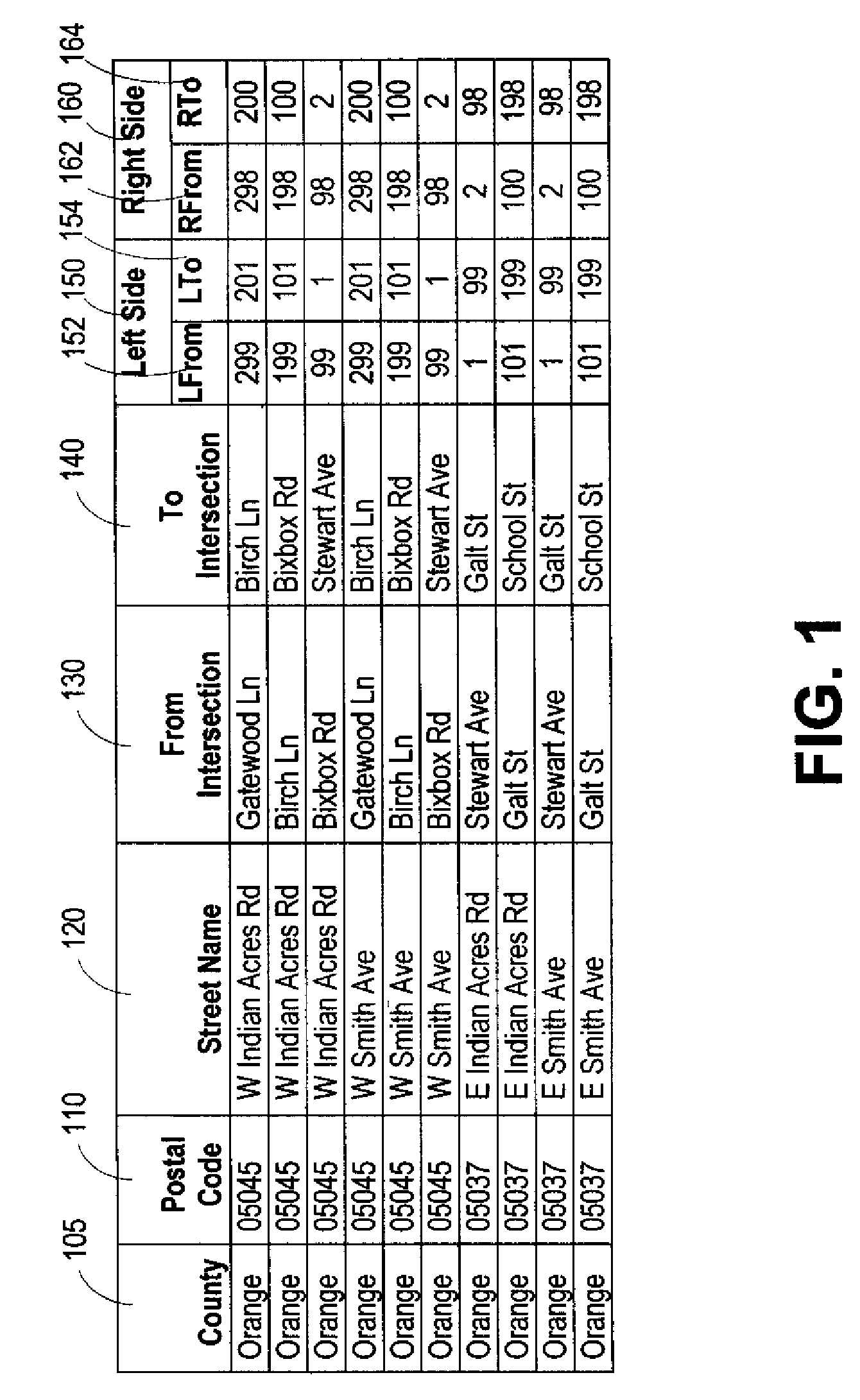Locating Linear Reference System Events in a Geographic Information System
a geographic information system and reference system technology, applied in the field of data transformation, can solve the problems of inability to solve problems such as time-consuming and difficult use, confusion of two data sets, and high cost of purchasing software for addressing this task,
- Summary
- Abstract
- Description
- Claims
- Application Information
AI Technical Summary
Problems solved by technology
Method used
Image
Examples
Embodiment Construction
[0036]Generally described, a method and system are provided for determining the geographic locations of events in a Department of Transportation (DOT) Linear Reference System (LRS). That is, a DOT can use this method and system to find where a particular LRS event is located on the face of the earth, for example, to dispatch a maintenance crew. This method and system can be useful for representing LRS events in a geographic database used by a geographic information system (GIS) to display, map, and analyze spatial information.
[0037]LRS data is conflated with GIS data for use in electronic maps and electronic databases. A LRS event geocoding database is created and geocoding software is used to generate the location of an event from the linear measure implicit in an event identifier. The event identifier, description, and location are subsequently inserted into the appropriate layer of a pre-existing and unmodified geographic database for mapping and display. The geocoding database m...
PUM
 Login to View More
Login to View More Abstract
Description
Claims
Application Information
 Login to View More
Login to View More - R&D
- Intellectual Property
- Life Sciences
- Materials
- Tech Scout
- Unparalleled Data Quality
- Higher Quality Content
- 60% Fewer Hallucinations
Browse by: Latest US Patents, China's latest patents, Technical Efficacy Thesaurus, Application Domain, Technology Topic, Popular Technical Reports.
© 2025 PatSnap. All rights reserved.Legal|Privacy policy|Modern Slavery Act Transparency Statement|Sitemap|About US| Contact US: help@patsnap.com



